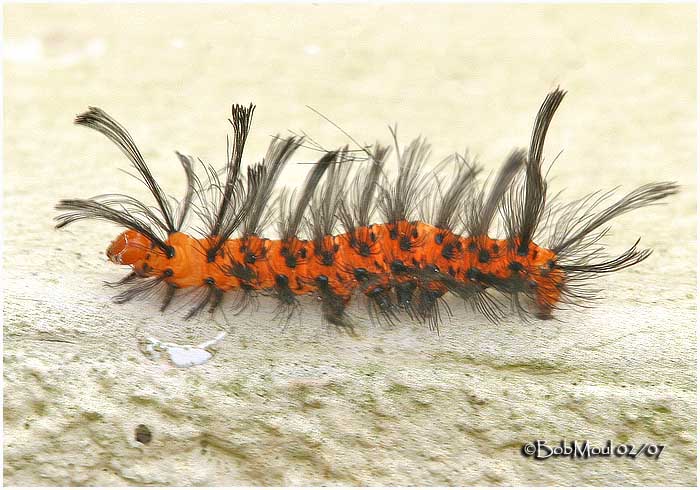Source(s): Jacob G Price
Introduction: The Oleander caterpillar is a serious problem along the southern coast of Georgia. This pest feeds only on Oleander, a horticulturally important plant that is poisonous to most animals.
Three generations per year occur in our area with the damaging larval stage pictured above right, usually present in March, December, and July. The moth stage of this pest is bluish-purple with white dots on black wings. Female moths lay oval, light yellow eggs on the undersides of leaves. Upon hatching, the young caterpillars first eat their shells, then begin feeding on the underside of the leaf. Fully grown larvae are usually about an inch long. The entire life cycle is completed in about 60 days.
Control
A number of control measures are available for leaf eating caterpillars. The best control measure is locating and removing eggs prior to hatching. If hatching caterpillars are found products such as acephate (Orthene), malathion, and carbaryl (Sevin) can be used. A natural bacteria called BT (Bacillus thuringiensis) can be used as well. BT is sold under the trade name Thuricide or Dipel. It is best when caterpillars are less than 1/4″. Read the product labels for mixing instructions. Some formulations of chemicals are labeled for effective control of this pest while other formulations are not. Scouting for this pest is important, it can devour an oleander shrub in a short period of time and is very difficult to control when larvae are larger.
Resource(s): Insect Pests of Ornamental Plants
Center Publication Number: 40
- Growing Asparagus: A Luxury Vegetable - September 24, 2013
- Frizzle Top in Sago Palms - September 24, 2013
- Growing Onions in the Home Garden - September 24, 2013
